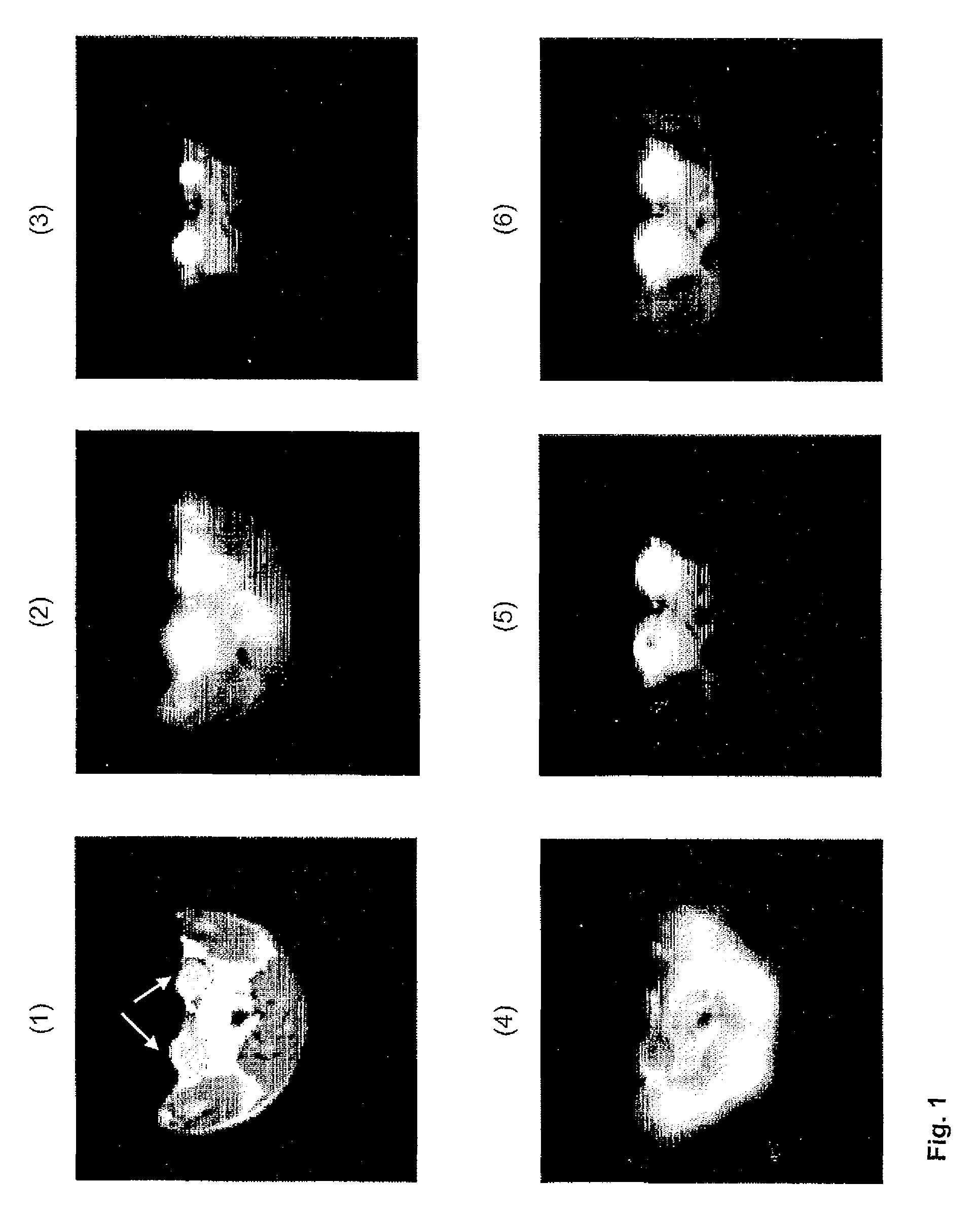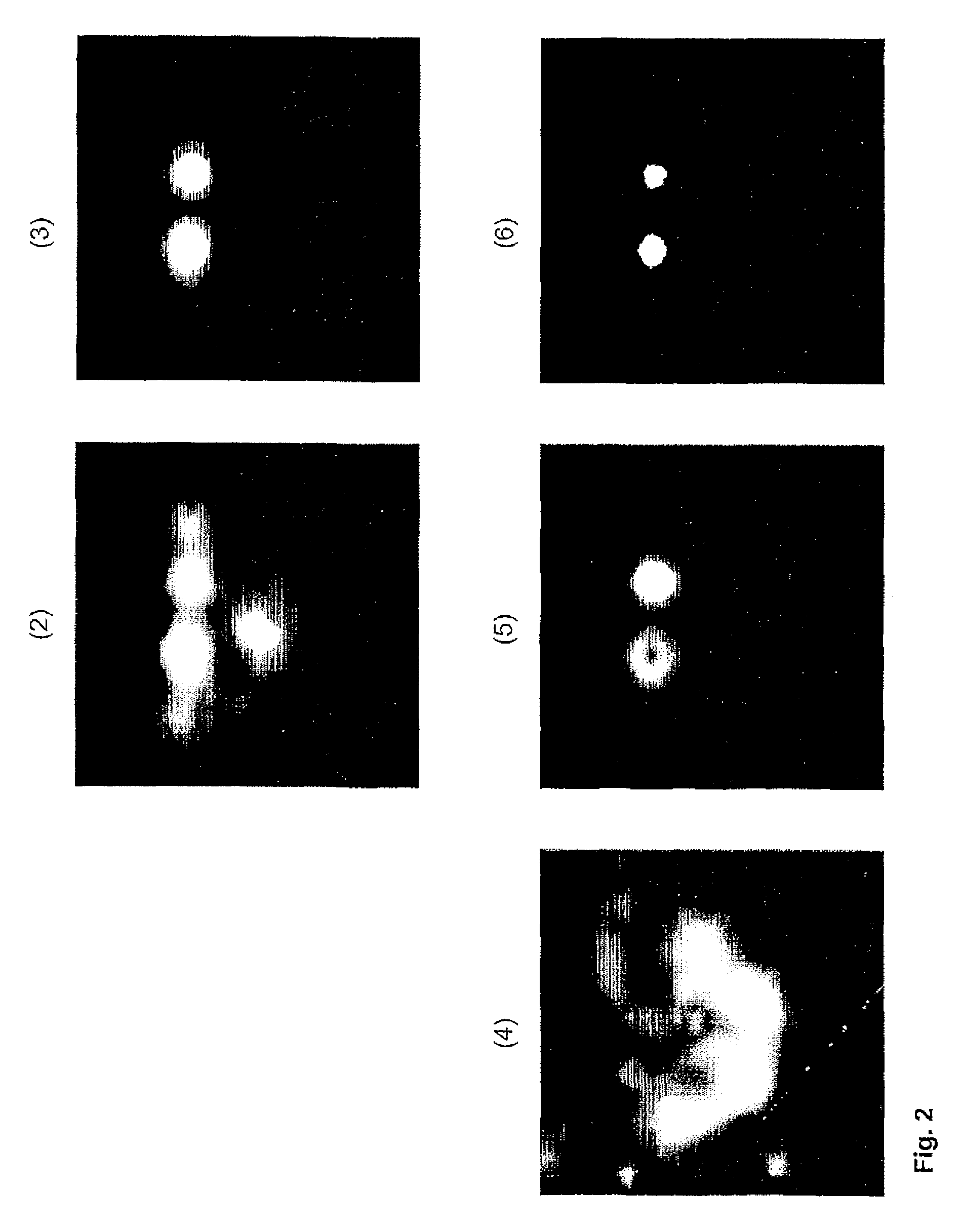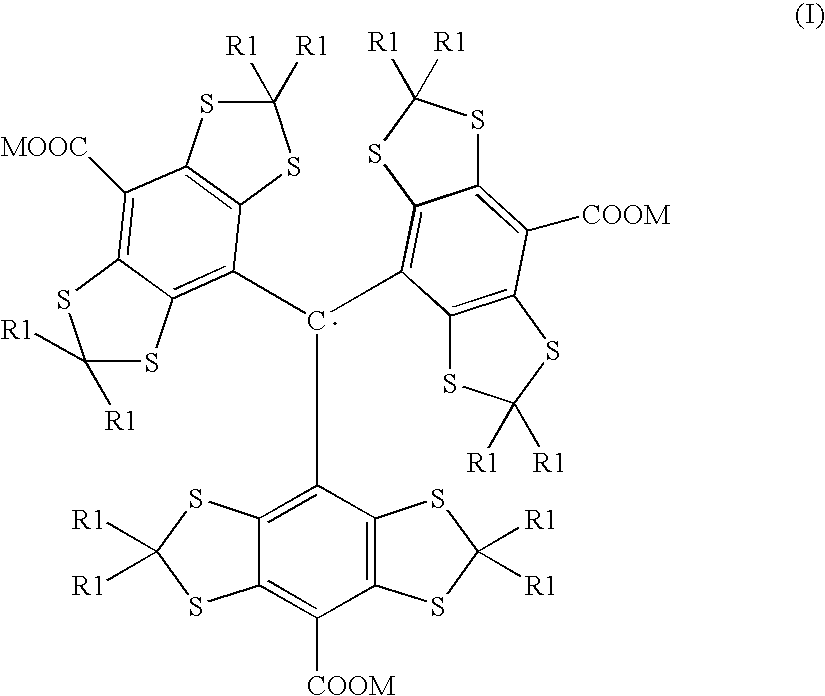Method of producing a composition, composition and its use
a composition and composition technology, applied in the field of composition and composition production, can solve the problems of toxic metal ions released in the body after administration, poor specificity of contrast agents, etc., and achieve the effects of improving signal quality, faster acquisition time, and higher spatial resolution
- Summary
- Abstract
- Description
- Claims
- Application Information
AI Technical Summary
Benefits of technology
Problems solved by technology
Method used
Image
Examples
example 1
Synthesis of Tris(8-carboxy-2,2,6,6-(tetra(methoxyethyl)benzo-[1,2-4,5′]bis-(1,3)dithiole-4-yl)methyl sodium salt
[0088]10 g (70 mmol) Tris(8-carboxy-2,2,6,6-(tetra(hydroxyethyl)benzo-[1,2-4,5′]-bis-(1,3)-dithiole-4-yl)methyl sodium salt which had been synthesized according to Example 7 of WO-A1-98 / 39277 were suspended in 280 ml dimethylacetamide under an argon atmosphere. Sodium hydride (2.75 g) followed by methyl iodide (5.2 ml) was added and the reaction which is slightly exothermic was allowed to proceed for 1 hour in a 34° C. water bath for 60 min. The addition of sodium hydride and methyl iodide was repeated twice with the same amounts of each of the compounds and after the final addition, the mixture was stirred at room temperature for 68 hours and then poured into 500 ml water. The pH was adjusted to pH>13 using 40 ml of 1 M NaOH (aq) and the mixture was stirred at ambient temperature for 15 hours to hydrolyse the formed methyl esters. The mixture was then acidified using 50 ...
example 2
Production of hyperpolarised 13C-pyruvate using 13C-pyruvic acid and the radical of Example 1
[0089]A 20 mM solution was prepared by dissolving 5.0 mg of the radical of Example 1 in 13C1-pyruvic acid (164 μl). The sample was mixed to homogeneity and an aliquot of the solution (41 mg) was placed in a sample cup and inserted in the DNP polariser.
[0090]The sample was polarised under DNP conditions at. 1.2 K in a 3.35 T magnetic field under irradiation with microwave (93.950 GHz). After 2 hours the polarisation was stopped and the sample was dissolved using a dissolution device according to WO-A-02 / 37132 in an aqueous solution of sodium hydroxide and tris(hydroxymethyl)aminomethane (TRIS) to provide a neutral solution of hyperpolarized sodium 13C1-pyruvate. The dissolved sample was rapidly analysed with 13C-NMR to assess the polarisation and a 19.0% 13C polarisation was obtained.
example 3
Production of hyperpolarised 13C-pyruvate using 13C-pyruvic acid and the radical of Example 1
[0091]A 15 mM solution was prepared by dissolving the radical of Example 1 (209.1 mg) in a mixture of 13C1-pyruvic acid (553 mg) and unlabelled pyruvic acid (10.505 g). The sample was mixed to homogeneity and an aliquot of the solution (2.015 g) was placed in a sample cup and inserted in the DNP polariser.
[0092]The sample was polarised under DNP conditions at 1.2 K in a 3.35 T magnetic field under irradiation with microwave (93.950 GHz). After 4 hours the polarisation was stopped and the sample was dissolved using a dissolution device according to WO-A-02 / 37132 in an aqueous solution of sodium hydroxide and tris(hydroxymethyl)aminomethane (TRIS) to provide a neutral solution of hyperpolarized sodium 13C1-pyruvate with a total pyruvate concentration of 0.5 M in 100 mM TRIS buffer. In series with the dissolution device a chromatographic column was connected. The column consists of a cartridge ...
PUM
| Property | Measurement | Unit |
|---|---|---|
| size | aaaaa | aaaaa |
| magnetic field | aaaaa | aaaaa |
| frequency | aaaaa | aaaaa |
Abstract
Description
Claims
Application Information
 Login to View More
Login to View More - R&D
- Intellectual Property
- Life Sciences
- Materials
- Tech Scout
- Unparalleled Data Quality
- Higher Quality Content
- 60% Fewer Hallucinations
Browse by: Latest US Patents, China's latest patents, Technical Efficacy Thesaurus, Application Domain, Technology Topic, Popular Technical Reports.
© 2025 PatSnap. All rights reserved.Legal|Privacy policy|Modern Slavery Act Transparency Statement|Sitemap|About US| Contact US: help@patsnap.com



